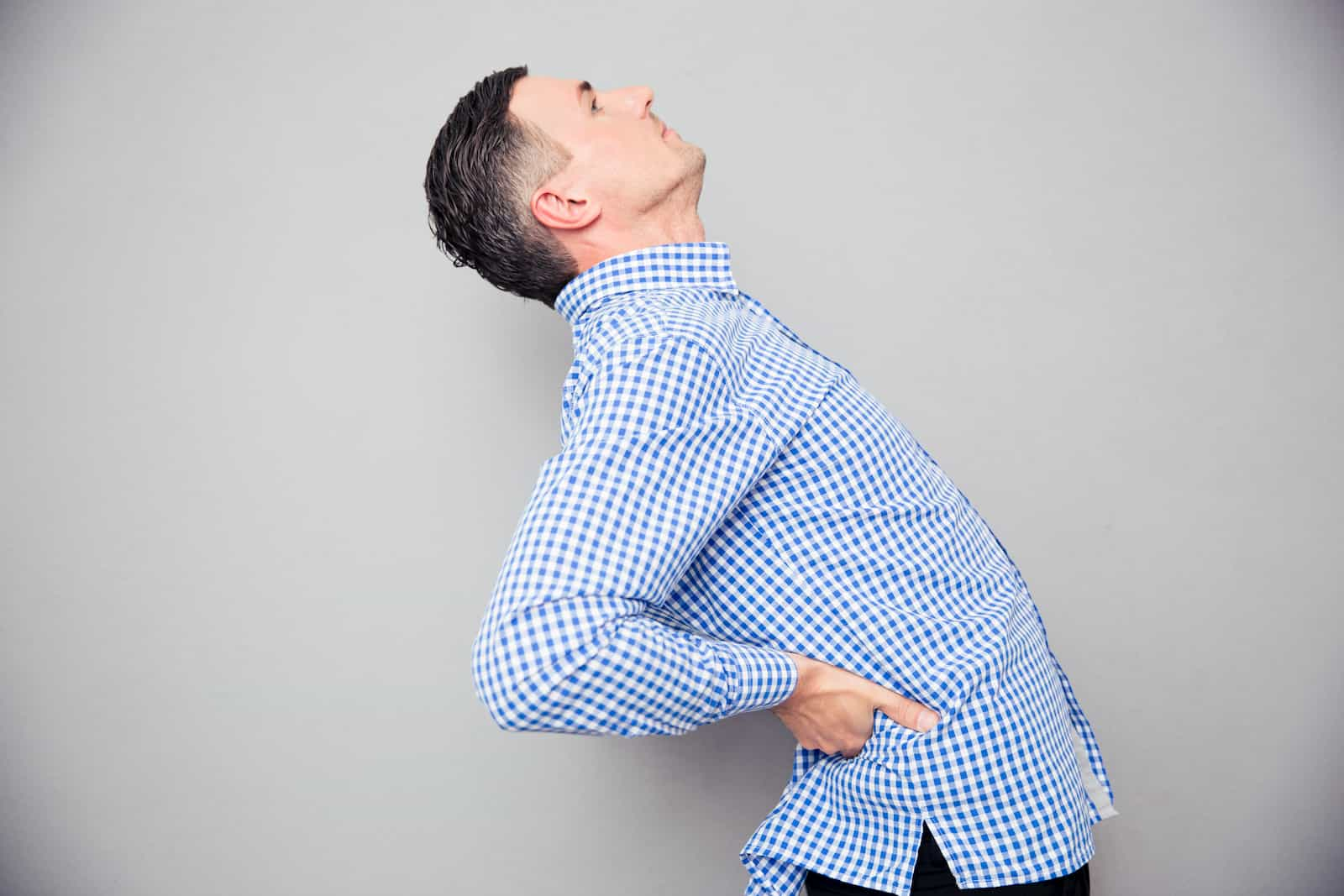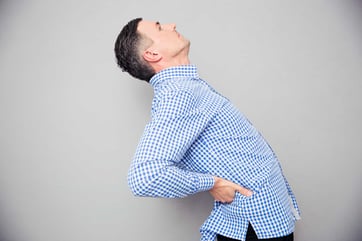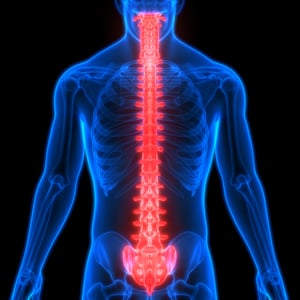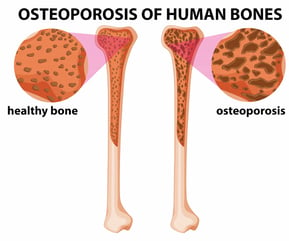The Aging Spine: Injuries and Risk Management
June 26th, 2019 | 4 min. read

The spine is a complex series of 24 vertebrae along with the fused bones of the sacrum and coccyx that form the very center
 of the skeleton. This vertebral column is a strong and flexible structure that supports the head, houses the spinal cord, and provides an attachment point for the ribs. The spine is made up of four major components: the vertebrae, joints, nerves, and disks. All four of these components eventually show signs of aging that can further develop into more severe issues. The disks, for example, begin to break down and become less capable of cushioning the vertebrae from rubbing up against each other. They lose much of the ability to absorb impact from normal and abnormal bending of the spine and can cause chronic discomfort as they deteriorate. Chronic discomfort is, unfortunately, a common thread among all issues of the spine regarding aging. Arthritis, for example, is a painful development in the joints that wears down cartilage and can overgrow the bones to develop rigidness between joints. The many joints of the spine are susceptible to this change.
of the skeleton. This vertebral column is a strong and flexible structure that supports the head, houses the spinal cord, and provides an attachment point for the ribs. The spine is made up of four major components: the vertebrae, joints, nerves, and disks. All four of these components eventually show signs of aging that can further develop into more severe issues. The disks, for example, begin to break down and become less capable of cushioning the vertebrae from rubbing up against each other. They lose much of the ability to absorb impact from normal and abnormal bending of the spine and can cause chronic discomfort as they deteriorate. Chronic discomfort is, unfortunately, a common thread among all issues of the spine regarding aging. Arthritis, for example, is a painful development in the joints that wears down cartilage and can overgrow the bones to develop rigidness between joints. The many joints of the spine are susceptible to this change.
Arthritis
Arthritis in the spine affects the many facet joints between vertebrae as well as the aforementioned vertebral disks. As the cartilage between these joints wears down the bones, begin to grind against each other and cause pain and reduction in mobility. This type of disorder is known as Osteoarthritis and is primarily a function of use over the years. RheumatoidArthritis, on the other hand, is a disorder where the immune system of the body attacks the lining of joint capsules in the body, including those between vertebrae. This can eventually destroy the joint capsule and even part of the bone. Regardless of the type of arthritis, it is essential to watch out for the risk factors present:
• Family History: Some types of arthritis run in families. You may be more likely to develop arthritis if your parents and or siblings have the disorder. Your genetic predisposition may make you more susceptible to environmental factors that can trigger arthritic changes in your joints.
 • Previous injury: People who have past injuries to joints from playing sports,
• Previous injury: People who have past injuries to joints from playing sports,
for instance, are likely to develop arthritis in that joint.
• Obesity: Carrying excess pounds puts strain on the weight-bearing joints of
the body, such as the knees, hips, and spine. Obesity increases the risk of developing arthritis.
• Age: The risk of developing all types of arthritis, including rheumatoid and Osteoarthritis, increase with age.
Arthritis in the spine is especially troublesome because it can cause a narrowing of the spinal canal that houses the spinal cord and nerve roots. This, in turn, can impinge the nerves and cause pain down one or both of the legs while walking or standing.
Osteoporosis
Another issue that is common with aging is the development of osteoporosis of the bones. Osteoporosis is a disorder in which the bones lose density and become more porous and fragile. This most commonly affects the hips and spine. It is a silent progression that often goes unnoticed until an osteoporotic fracture occurs. These fractures are, in fact, quite common. 1 in 3 women and 1 in 5 men over the age of fifty are at serious risk of an osteoporotic fracture. The statistics skew more towards women because of the changes the body goes through after menopause.
Osteoporosis in the spine most often manifests as a compression fracture.

A compression fracture is the giving in of the body of the vertebra under the weight of the body. This can cause severe pain and can alter the anatomy of the spine itself because the vertebrae lose height when compressed. Once the vertebrae of the spine are affected by osteoporosis, a compression fracture can happen very easily. A fall or misstep can cause one. Even the simple act of a strong cough can cause a compression fracture to an osteoporotic vertebra. The combination of loss of muscle mass along the spine, arthritic changes of the disks and compression fractures of the vertebrae can cause the spine to “fold over” causing a stooped posture. This is known as a dowager’s hump, also known as hyperkyphosis. While there are regular curves of the spine, hyper-kyphosis is an abnormal curvature that can severely limit the regular function of the spine and be quite painful. The treatment for a compression fracture depends on how much it affects the patient. It is possible to live with a compression fracture, but if pain increases immobilization by use of a back brace is an option. If more serious measures are required, there are 2 common surgeries:
- Vertebroplasty: Under local anesthetic, a doctor will inject acrylic-based bone cement into the collapsed vertebra. The cement hardens in about 2 hours, and a patient can usually return home the same day.
- Kyphoplasty: In this similar procedure a balloon is inserted into the damaged vertebra and expanded to restore the bone to its original shape. Cement is then injected into the vertebra.
Preventative Measures
While the development of arthritis and osteoporosis may seem like they are out of your control, there are ways to mitigate the risk if you are mindful early on.
- Get regular exercise: Strengthening the muscles that support the body is extremely beneficial to maintaining a healthy spine. Try to find an exercise routine that takes into account your age and physical fitness level. Lifting weights is helpful, but if it causes symptoms, lighter exercise such as a pool routine also help. Building up the abdominal muscles that support the spine if crucial. Remember that the more you weigh, the more strain is put on the spine, so a healthy weight is also important!
- Maintain good posture: It is essential to be mindful of the position of your spine as you go throughout your day. When sitting, avoid slouching and try to keep the spine in a straight line. Maintain good posture as you do chores and other tasks by lifting with your legs and arms instead of your back. This can all help you avoid injury and wear on the spine.\
- Quit smoking: It is not news that smoking is bad for your health. Smoking can cause degenerative changes by constricting blood vessels that feed into your spine. Not only that, but it can amplify pain perception!
If you are experiencing back or leg pain, suspect you have an injury, or want to get a jump on your spinal health before anything serious happens, you should talk with your doctor. We can examine the overall health of your spine with an assessment that can include x-ray, bone density, and or possibly MRI. Coastal Orthopedics is an excellent place to start! Feel free to call and set up an appointment so our talented and knowledgeable staff can get you started on the right path to a healthy spine.
Dr. Williams has been practicing orthopedic surgery in Corpus Christi since 1998. After graduating from Texas Tech hereceived his medical degree from the University of Texas at San Antonio. At the prestigious Campbell Clinic located at the University of Tennessee, Dr. Williams completed not only an Orthopedic Surgery Residency, but an additional year of Fellowship Training in Spine Surgery. Dr. Williams is dedicated to creating an excellent patient experience in the office or in the surgery suite.
Topics:

